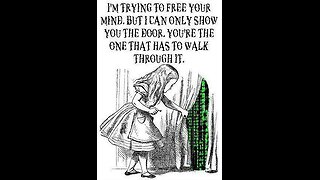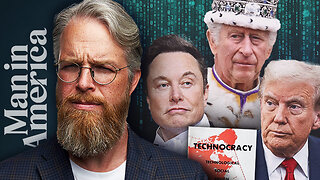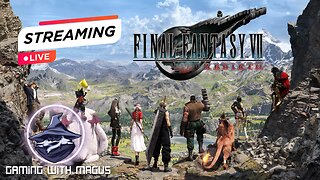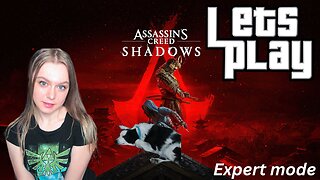Premium Only Content

The Power of Truth and Consensus: A Battle for the Collective Mind
In every era, humanity has wrestled with the tension between truth and consensus, two forces that define how societies understand themselves and the world. Truth is the pursuit of an unchanging ideal, a beacon for those who seek to unravel the mysteries of existence. Consensus, on the other hand, is the mechanism by which diverse minds unite, enabling the functioning of civilizations. Yet, when these forces collide, their interplay reveals profound insights about power, perception, and control.
Katherine Maher, former head of the Wikimedia Foundation and current CEO of NPR, offers a provocative lens into this dynamic. Maher once remarked that those crafting Wikipedia’s narratives aren’t “focused on finding the truth.” Instead, they aim for “the best of what we can know right now.” This candid admission invites a deeper inquiry: When does the pursuit of consensus erode the pursuit of truth? And how do those in power leverage this tension to shape society?
I. Truth and Consensus: Dual Forces in the Human Story
The Nature of Truth
Truth has been revered as a guiding principle throughout history, yet its definition remains elusive:
• Objective Truth
Immutable realities, such as the laws governing natural processes or universal constants, exist independently of human interpretation.
Example: The cycles of nature—day, night, seasons—unfold irrespective of belief.
• Subjective Truth
Rooted in human experience, subjective truths emerge from personal perspectives, cultural narratives, and collective memories.
Example: The meaning of a symbol, gesture, or historical event varies across communities.
This duality underscores that truth is both universal and deeply personal, creating fertile ground for conflict and interpretation.
The Mechanism of Consensus
Consensus functions as the societal glue, uniting disparate viewpoints into a shared understanding:
• Stability Through Agreement
Shared beliefs and values allow societies to function, from the establishment of laws to the creation of cultural norms.
Example: Agreements on fairness, justice, and cooperation enable communities to thrive.
• The Risks of Conformity
When consensus suppresses dissent, it risks homogenizing thought, erasing diversity, and obscuring truths that challenge the status quo.
Example: Historical periods of censorship have stifled innovation and suppressed alternative viewpoints.
The dynamic between truth and consensus has shaped history, culture, and human progress, but it has also been a tool for control.
II. The Fractured Realities of the Modern Era
From Unified to Fragmented Understandings
As information becomes decentralized, the landscape of truth and consensus grows increasingly fragmented:
• Pre-Industrial Societies: Truth and consensus were shaped by elders, traditions, and oral histories, fostering communal identity.
• Industrial and Technological Shifts: Printing presses and mass communication centralized narratives but introduced new avenues for propaganda and manipulation.
• The Digital Divide: Today, the proliferation of information has created countless “truth silos,” where communities form around shared but often divergent realities.
This decentralization empowers individuals but erodes the possibility of a unified societal narrative.
The Crisis of Trust
The rise of competing narratives has led to widespread mistrust:
• Media Manipulation: The prioritization of click-driven content undermines nuanced truth-telling.
• Algorithmic Polarization: Technology amplifies confirmation bias, creating echo chambers where individuals encounter only ideas that reinforce their beliefs.
In this fractured reality, the line between truth and opinion grows increasingly blurred, leaving consensus vulnerable to manipulation.
III. Katherine Maher and the Relinquishment of Truth
Maher’s assertion—that reverence for truth can be a “distraction”—signals a shift in priorities:
1. Pragmatism Over Purity
Maher advocates for focusing on what is attainable—the “best of what we can know right now”—rather than striving for absolute truth.
2. Truth as a Negotiation
Her perspective suggests that truth is not fixed but fluid, shaped by the interplay of facts, beliefs, and cultural frameworks.
While this approach recognizes the complexities of human understanding, it also raises ethical concerns: When truth is deprioritized in favor of consensus, who decides what narratives prevail? And whose interests do these narratives serve?
IV. The Tools of Influence: Shaping Consensus, Suppressing Truth
Psychological Manipulation
Human psychology plays a pivotal role in the battle between truth and consensus:
• Group Dynamics: People are drawn to conformity, seeking validation from their peers. This tendency fuels groupthink, where consensus overrides critical thinking.
• Emotional Appeals: Narratives that evoke fear, hope, or nostalgia are more likely to gain consensus, even if they diverge from factual accuracy.
Cultural Reframing
Those in power often use consensus as a means of rewriting societal norms:
• Redefining History: Events are reframed to serve contemporary agendas, erasing inconvenient truths.
Example: The rebranding of figures or events to align with current ideologies.
• Controlling Language: Shifts in terminology influence public perception and control dialogue.
Example: Euphemisms or redefinitions soften the impact of controversial ideas, making them more palatable.
These strategies reveal how consensus can be engineered, masking manipulation as collective agreement.
V. Toward a New Understanding: Reconciling Truth and Consensus
The Prismatic Framework
To navigate the tension between truth and consensus, we propose a three-part model:
1. Immutable Truths: Foundational principles that remain constant across time and cultures.
Example: Observations of the natural world.
2. Evolving Truths: Contextual realities shaped by societal, cultural, and temporal factors.
Example: Shifting views on governance or morality.
3. Adaptive Consensus: A living process that bridges immutable and evolving truths, fostering collaboration without sacrificing authenticity.
This framework acknowledges the complexities of human understanding while safeguarding against the erosion of integrity.
VI. Ethical Imperatives for a Fractured World
As truth and consensus diverge, the following principles become essential:
1. Transparency: Institutions must reveal the motives behind their narratives.
2. Accountability: Those shaping consensus must be held responsible for their influence.
3. Empowerment: Individuals must cultivate critical thinking to resist manipulation and engage with information mindfully.
By adopting these principles, society can strive for a more balanced relationship between truth and consensus.
VII. Conclusion: Reclaiming the Power of Perception
The interplay of truth and consensus defines the human experience, shaping our histories, cultures, and futures. Maher’s remarks invite us to question whether our collective focus has shifted too far from authenticity toward expedience. In a world inundated with competing narratives, the challenge lies in discerning what is real, what is agreed upon, and who benefits from these distinctions.
As we navigate this landscape, we must recognize our role as both creators and consumers of truth and consensus. By embracing transparency, fostering accountability, and valuing critical inquiry, we can reclaim the power to shape a reality that honors both authenticity and unity. The pursuit of truth may be arduous, but it remains the cornerstone of a just and enlightened society.
-
 2:00
2:00
FragmentsOfTruth
1 day agoDown the Rabbit Hole: What Happens When You Can No Longer Relate to the Matrix?
1662 -
 3:07:55
3:07:55
IcyFPS
4 hours agoIcy Tackles Rebirth Island, again! Day 3 | Verdansk Soon | New META hunt? |
15.2K -
 1:22:18
1:22:18
Man in America
11 hours agoTECHNOCRACY INC.: Sinister Links Between Musk, USA, and the British Crown?
49K26 -
 2:40:30
2:40:30
SlingerGames
5 hours agoThursday Variety Stream!
20.5K4 -
 3:05:53
3:05:53
SIMSIM GT
6 hours agoConvoy | Truck Simulator | TRIPLE 55INCH SETUP | GOPRO POV |
32.9K3 -
 5:13:21
5:13:21
IronAngel26
7 hours ago $0.73 earnedfew games of fortnite
23.3K2 -
 3:25:50
3:25:50
GamingwithMagus
5 hours agoOG Final Fantasy fan plays FF7 Rebirth part 27
31.6K4 -
 14:40:56
14:40:56
charwinslow
17 hours agocurrently playing Assassin's Creed: Shadows, expert mode (& Nintendo Direct reaction n yoga)
25.1K -
 4:18:51
4:18:51
hockeymancb77
7 hours agoNEW GAME ALERT!!! R.E.P.O. Stream! Lets get it!
33.3K2 -
 LIVE
LIVE
TwinGatz
7 hours ago🔴LIVE - 1.3 UPDATE HAS LANDED | ARMA Reforger
180 watching